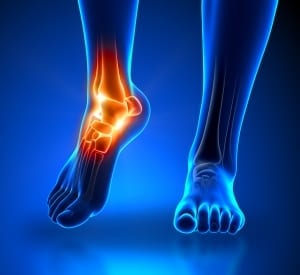Herzliya Medical Center
Tel: +972-9-959-4888
09:00-18:00
 Ankylosing spondylitis treatment in Israel is carried out in the Orthopedic department of Herzliya Medical Center, the leading private hospital in Israel. Unique methods of complex therapy and intensive rehabilitation allows medical professionals to successfully cope with severe diseases of the spine, in efforts to restore the ability to function for most patients.
Ankylosing spondylitis treatment in Israel is carried out in the Orthopedic department of Herzliya Medical Center, the leading private hospital in Israel. Unique methods of complex therapy and intensive rehabilitation allows medical professionals to successfully cope with severe diseases of the spine, in efforts to restore the ability to function for most patients.
Ankylosing spondylitis (AS), Bechterew’s disease, or Marie Strumpell disease – a chronic, progressive disease of the joints that mainly affects the intervertebral connection (intervertebral joints). The disease may also involve the soft tissue located near the spine. Ankylosing spondylitis is most common in adolescence and young adulthood (diagnosed usually up to 20 years old). Chronic inflammation selectively damages the joints with an abundance of cartilage. In addition, intervertebral joint damage is observed in the sacrococcygeal and sacroiliac joints, sternoclavicular and sternocostal joints. This inflammatory disease leads to the deposition of fibrous scar tissue in the articular surfaces, leading to a sharp decrease in the amplitude of motion, and in advanced stages causing complete immobility in the joints (ankylosis) and severe deformation.
Inflammation found in cases of ankylosing spondylitis is considered an autoimmune character. Numerous scientific studies analyze the causes of ankylosing spondylitis and they have established a distinct genetic predisposition. It is known that carriers of the mutation of the gene HLA-B27 have an increased likelihood of developing ankylosing spondylitis compared to that of the rest of the population. It is also found that infectious diseases may cause the development of ankylosing spondylitis. However, in 10% of cases, ankylosing spondylitis occurs in patients without identified risk factors. Men are also more susceptible to developing AS.
The onset of ankylosing spondylitis is characterized by the development of persistent pain. Pain in this disease occurs at rest (usually during the night and early morning) and decreases throughout the day with sufficient physical activity. In the future, a common symptom of ankylosing spondylitis is increasing lumbar muscle tension, which involves changes in posture.
Most commonly affect joints between base of the spine and pelvis, as well as lower back vertebrae (back pain, stiffness). In addition, deformities often occur in the breastbone and ribs. The symptoms of ankylosing spondylitis may be extended to other large joints, as well as hitting the connective tissue of blood vessels, structures of the heart, kidneys, and eyes, as a result of the extensive systemic autoimmune process – these symptoms include swelling, fatigue, and pain. A permanent stoop and bow-shaped curvature of the spine results in ankylosis becoming irreversible. AS can also cause arthritis, in the hips and knees.
Ankylosing spondylitis is suspected when typical signs arise in the medical history or in an objective evaluation of the patient. Diagnosing ankylosing spondylitis takes place in the Skilled Department of Orthopedics at Herzliya Medical Center, diagnostics include:
Herzliya Medical Center practices all modern methods of treatment of ankylosing spondylitis that include:
Ankylosing spondylitis treatment involves complex rehabilitation therapy. This therapy involves physical exercise under medical supervision as an integral part of the treatment. Constant movement in the joints and procedures is designed to increase the range of motion to prevent the development of ankylosis. The qualified staff of the physical therapy department help to restore mobility of the spine and to significantly reduce pain. After a course of complex therapy for the patients at Herzliya Medical Center is conducted, more detailed recommendations for further outpatient care and the necessary recovery procedures are developed.